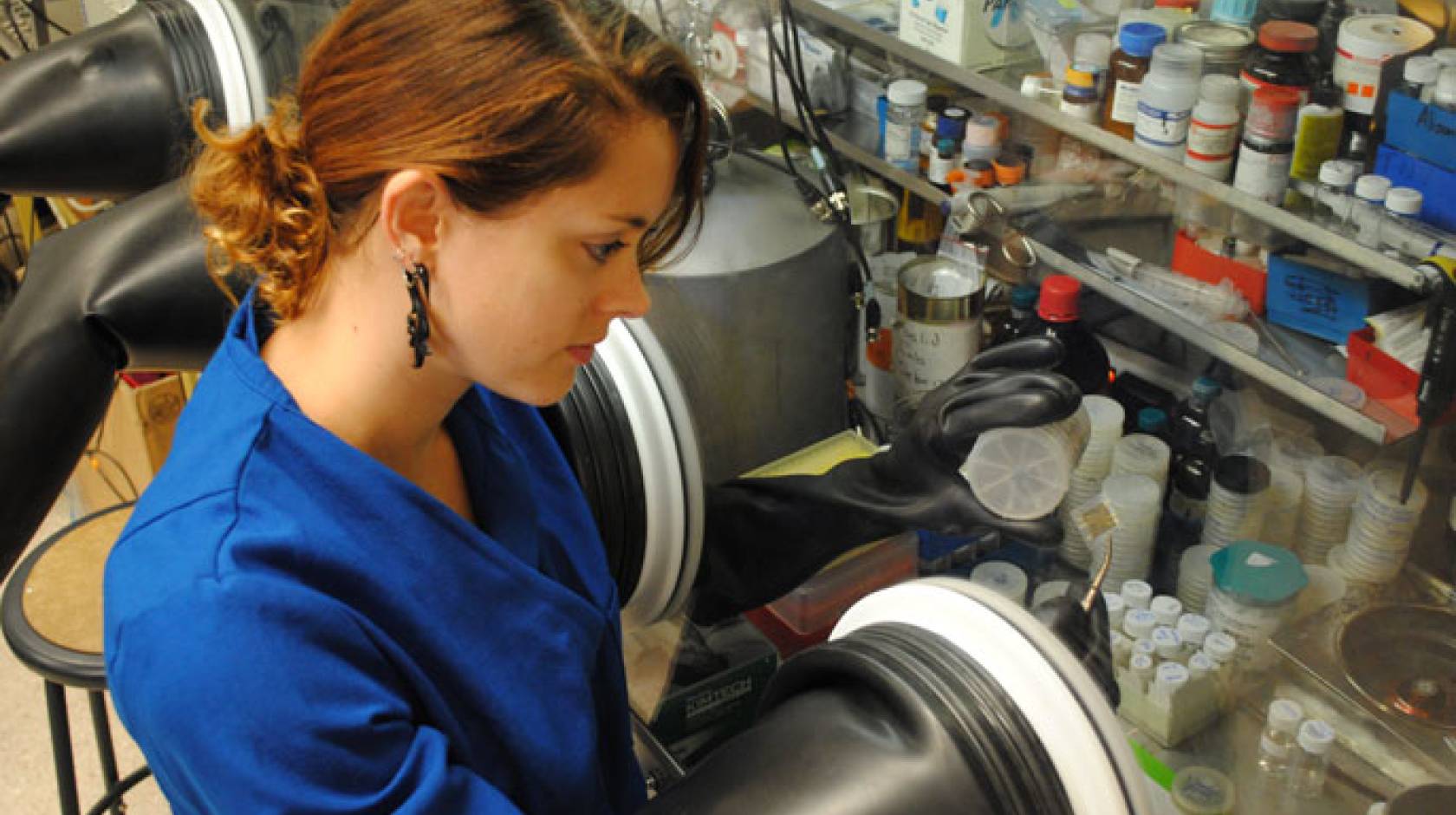Nicole Freeling, UC Newsroom

When it comes to economic growth and educational excellence, California has a secret weapon: its 56,000 University of California graduate students.
They are the workhorses behind UC’s prowess in education and research — helping teach undergraduates, conducting original research and making discoveries that result in a new startup every two weeks.
The whole state would benefit, in fact, if Sacramento lawmakers helped UC expand its graduate student enrollment, university officials say.
On Wednesday, 26 Ph.D. and master’s students will take a break from their books and beakers to visit with state lawmakers and give them first-hand insight into their work and why it merits more state investment.
“We’re seeing such a strong backlash right now against intellectualism and science- and knowledge-based decision-making. We do such a lot of hard work as researchers to build the basis for educated decision-making. It’s important to come and show how that makes a difference — especially in health outcomes,” said Sophia Levan, a UCSF grad student who is studying the relationship of newborns' gut microbes to their likelihood of developing childhood asthma.
“It’s important for people to be able to put a face on research. To know: this is what graduate students look like. This is how we act and how we think. We can make jokes. We’re not just in a lab. We are regular people.”
The contributions from graduate students are often overshadowed by undergraduate peers in the classroom and UC’s renowned faculty, but UC’s master’s and doctoral students are critical to advancing academics, research and scholarship.
“People who have never been part of a graduate program are often not aware of the vital role our master’s and Ph.D. students play within the university — or the enormous wellspring of talent they bring to the state,” said Pamela Jennings, UC executive director of graduate studies.
In the classroom, grad students lead the seminars, labs and small group discussion sections that allow students, even in large lecture classes, to have individualized attention from an instructor.
They also make it possible for UC to vigorously pursue its research agenda. They develop and drive original avenues of inquiry, while also handling much of the day-to-day grind for faculty research.
Their outsized contributions are hardly limited to the university, however.
Collectively, UC graduate students are an enormous brain trust for the state, spinning out knowledge and innovation in critical areas from education to energy.
They also contribute to a highly skilled workforce, and hatch the new technologies and companies that create jobs for all Californians — not only those with graduate degrees.
And, unlike tenured faculty with secure careers in academia, they are more likely to take the risk, time and effort to launch startups from the fruits of their research.
By giving lawmakers a taste of their efforts — in vital areas such as improving retention in STEM education, creating cheaper solar cells and combatting childhood asthma — graduate students hope to demonstrate that they are an investment well worth making.
Here are a few of UC’s graduate research ambassadors:
Using stories to spur health screenings

Credit: Heartbox Photography
Latinos in California are less likely than other groups to get regular colorectal cancer screenings, a procedure that saves lives. UC Berkeley grad student Vicky Gomez is testing a novel approach to changing those statistics by using multimedia storytelling to reach people in their churches and communities rather than in doctors’ offices, with messages from peers instead of practitioners.
Getting fertilizer just right

Courtesy Telha Reman
Overuse of nitrogen fertilizer is a common problem in rice production. UC Davis grad student Telha Rehman is testing a simple device that provides growers with real-time data on how much nitrogen their fields need, making farms more productive while cutting down on cost and pollution.
Getting sharks to eat their veggies

Credit: Yannis Papastamatiou
Sharks are notorious carnivores, but UC Irvine grad student Samantha Leigh is studying one species, the bonnethead shark, that is partial to seagrass. It is thriving as other shark populations decline. Leigh investigates how its digestive process works to see, in part, if other sharks can adapt to a plant-heavy diet for purposes of survival as fish stocks decline.
Taking student mental health online

Credit: Anastasiia Sapon
UCLA grad student Leslie Rith-Najarian has developed an online universal prevention program for reducing anxiety and depression among college students. The program, which relies on evidence-based content to teach coping skills and provide motivational strategies, has already helped 5,000 UCLA students.
Watch Rith-Najarian’s Grad Slam talk here.
Motivating cancer survivors

Credit: Health Communications and Interventions lab at UC Merced
A small percentage of cancer survivors follow their doctors’ guidelines for diet, exercise and smoking cessation. UC Merced grad student Arturo Durazo knows why. Having battled cancer himself, he studies how survivors respond to messages about taking action on their health and what can be done to be more effective in motivating them to action.
Watch Durazo’s Grad Slam talk here.
Understanding obesity at the molecular level
With the obesity epidemic continuing to worsen, UC Riverside grad student Donovan Argueta is looking to better understand what drives obesity at the molecular level, with the goal of advancing treatment and prevention.
The science of seeing color
Using advanced imaging technology, UC San Diego grad student Anupam Garg records neural activity related to how the brain receives and processes color. His work aims to shed light on basic brain functions and how different types of cells contribute to visual perception.
Detecting and preventing childhood asthma

Courtesy Sophia Levan
Allergies and asthma are on the rise in California, causing a growing financial and emotional burden on patients, families, schools and health care providers. UCSF grad student Sophia Levan studies the human microbiome and whether it can be harnessed to detect and prevent these childhood diseases.
Democratizing public spaces and cultural institutions

Courtesy UC Santa Barbara
Mainstream art galleries and other cultural institutions struggle to attract and represent economically and ethnically diverse audiences. UC Santa Barbara grad student J.V. Decemvirale investigates L.A.-based arts organizations, founded by people of color, that are models for reaching a wider audience and which demonstrate the role that art can play in generating community, social cohesion and meaning in people’s lives.
Looking for new ways to harness the sun
Working at the cutting edge of photovoltaic science, UC Santa Cruz grad student Kaitlin Hellier performs basic research into new materials that could be used to generate solar energy. Her work could ultimately help the world transition to sources of energy that don’t contribute to climate change.
Credit: University of California

